FREQUENTLY ASKED QUESTIONS
Straight forward answers to the most important questions about solar energy.
“ Education is not the filling of a pail, but the lighting of a fire”
~William Butler Yeats
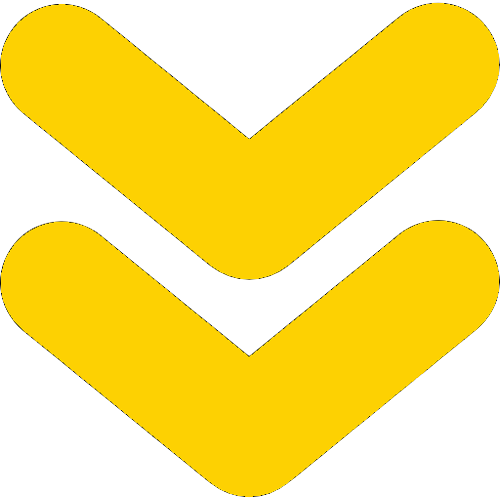
The ultimate guide ...
Our Educational
Solar Video Series


LEARN 25 INSIGHTS ABOUT SOLAR ENERGY THAT MAKES IT UNDENIABLY VALUABLE
If you are truly open to considering solar, but you aren't certain what questions to ask to figure out if it makes sense for your home or business, then our interactive educational video series is the best place to start.
Click the button for an insightful video series:
LEARN 25 INSIGHTS ABOUT SOLAR ENERGY THAT MAKES IT UNDENIABLY VALUABLE
If you are truly open to considering solar, but you aren't certain what questions to ask to figure out if it makes sense for your home or business, then our interactive educational video series is the best place to start.
Click the button for an insightful video series:
How Is Solar Energy Produced?
These are the FIVE STAGES of solar energy production:
How Is Solar Energy Produced?
These are the FIVE STAGES of solar energy production:

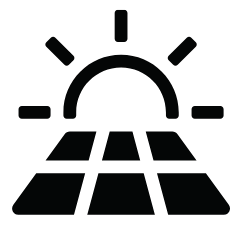
Your solar panels absorb the abundant power of the sun.
The sun shines down on your home or business. The solar panels create DIRECT CURRENT electricity.


Absorbed power is converted to clean, useable electricity.
Equipment converts the electricity that's created into useable ALTERNATING CURRENT electricity.

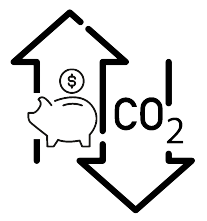
Your home starts using the cheaper & cleaner energy you've produced.
During daylight hours, your house/building starts using the electricity that you produced & now own.
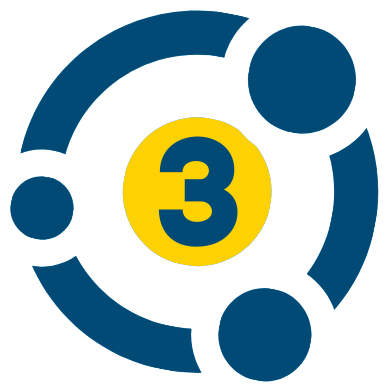
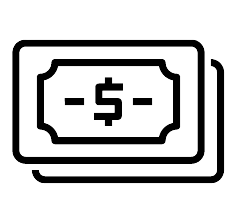
Receive utility credits for excess solar power + additional state funds.
Unused power is sent to the utility company's electric grid, for which you earn credits on your utility account.


Use your utility credit reserves to power your home when dark.
At night & during low sunlight days, you get electricity from the utility grid; paid for with your stored energy credits.

THE POWER TO CREATE YOUR OWN CHEAPER + CLEANER ELECTRICITY
How Solar Saves You Money 24/7 Throughout The Year
In this video, we demystify how net-metering works and walk you through how these agreements allow solar customers to work with the utility's grid to their advantage.
You'll learn how we account for snowy, cloudy and other days when the panels don't absorb as much sunlight.
This is an important piece of the puzzle and understanding the concept is crucial to understanding how you too can become Energy Independent.
What to Expect
We have streamlined the whole process so that you can sit back, relax and enjoy the switch over to clean & more affordable energy.
These are the FIVE STEPS of going solar:

Discovery
Call
This is typically a 10 - 15 minute call to discuss your energy consumption, have an understanding of your future energy needs and analyzing your roof's exposure to the sun.
If we establish that solar may be beneficial, we will ask for a copy of your most recent utility bill and schedule the consultation.

Solar Consultation
This is typically a 45 minute zoom video call.
We will go over the initial design that we created from the information we gathered during the Discovery Call.
The focus will be to review your savings potential and answer all your questions.

Design & Permitting
Our technicians will visit your property to confirm the project's viability. Their report will be used to finalize the engineering plans, which are submitted to your county and HOA for approval.
Our team takes care of everything for you so that the process is completely worry-free for you.

Installation &
Local Approval
Once your system design is finalized and the permitting is approved, we'll coordinate with you to schedule the installation of your system.
After the installation is completed, we will work with your county and utility company to coordinate a final inspection & approval of the project.

Inspection & Activation
Once the system passes the final inspections, we can turn it on.
We'll then schedule a time to help you set up Energy Credit Accounts and familiarize you with everything you'd need to maximize savings.
That's all. You simply start enjoying your cleaner, more affordable energy.
What Happens During The Consultation?
Your solar advisor will explain:
Your energy production & storage options
Details about your initial solar design
All available state & local solar incentives
Your tax strategy options
Answers for any questions concerning the process
What Happens During The Consultation?
Your solar advisor will explain:
Your energy production & storage options
Details about your initial solar design
All available state & local solar incentives
Your tax strategy options
Answers for any questions concerning the process
Voted ...
'Most Helpful' Answer
Why do people say that
installing a solar array on houses has
NO-ACTUAL COST?
By popular request, we've recorded a video response to this most frequently asked question. In this video, we go deeper into the following four (4) considerations:
100% Financing
Positive Monthly Cash Flow
Incentives & Tax Strategies
Increased Home Values
Many solar customers have told us that it was their understanding of this concept that finally made them truly ready to consider solar.
Watch Video Response:
Search FAQ's By Topic
How Solar Works
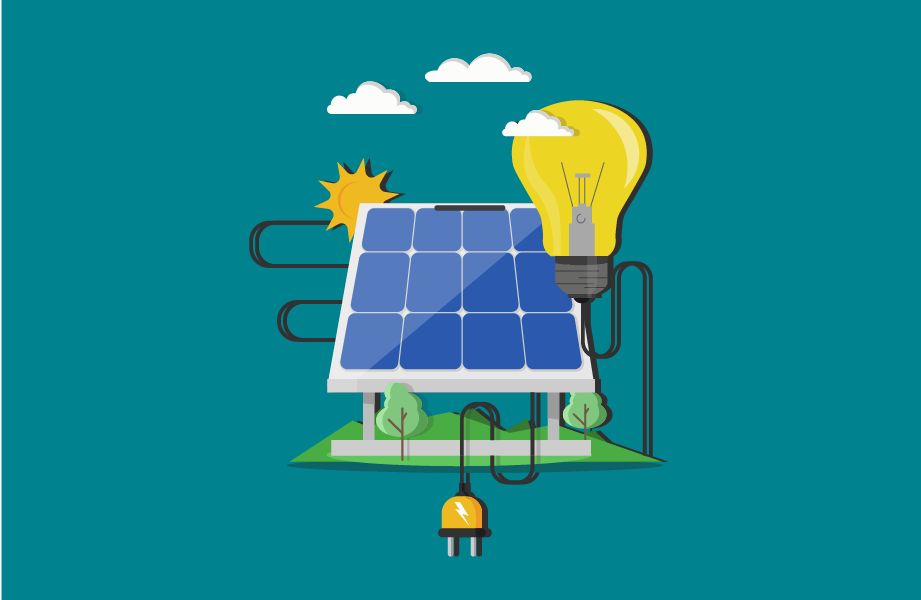
How do solar panels work?
Solar panels are made up of photovoltaic (PV) cells made of silicon. When the sun’s rays hit them, these cells convert sunlight to electricity. Individual cells are wired together to form a solar panel. Panels are typically three feet by five feet. They are coated in tempered glass, which allows them to withstand harsh weather. The electricity produced by a single solar panel is not enough to power a home or business, so multiple solar panels are needed. The number of panels varies by installation, but every solar system (also called an “array”) will include a series of panels mounted and wired together. This array may be installed on a roof (“rooftop solar”) or on the ground-level (“ground-mounted solar”).The electricity generated by solar panels takes the form of direct current (DC). However, most appliances and electricity-consuming objects (called “electric load”) require alternating current (AC). To convert the solar electricity from DC to AC, an inverter is needed. You will need to choose between two types of inverters: a central inverter and microinverters. While both perform the task of converting electricity from DC to AC, they differ in critical ways. Solar homeowners with a central inverter receive all of the electrical output of your entire solar system and converts it from DC to AC at a single, central location. A single central inverter is required for a solar system. It is often mounted on the side of your home or building next to your electric meter. Central inverters are steadfast and affordable, but they are susceptible to variations in panel performance. If one panel is shaded and produces less electricity than the others, the total electrical output will drop. If shading is of concern, microinverters or DC optimizers can help maximize production. Unlike central inverters, microinverters and DC optimizers individually mount to the backside of each individual solar panel. They capture the electricity that flows off of each panel. DC optimizers work with a central inverter that converts DC to AC. Microinverters convert DC immediately to AC right under the panel. With either DC optimizers or microinverters, if one panel is shaded, it will not affect the output of the whole array. By design, both DC optimizers and microinverters help maximize the conversion of electricity and are useful in situations with variable shading. What’s more, because they allow each panel to operate independently of one another, both make it easy to add more panels to a solar array in the future.Once electricity is produced by the solar panels and converted from DC to AC by the inverter(s), it will flow through your electric meter and into your home or building. It will be used on site the moment it is created. Any excess will flow back out through your electric meter and onto the local grid.
What is “Net Metering”?
Net metering is a billing mechanism that credits homeowners with solar systems for the electricity they individually add to the grid. When solar panels are connected to the public power grid and surplus power generated is transferred onto the grid, clients with solar can offset the cost of power drawn from the utility. The concept of “net metering” applies on days when your solar panels produce more electricity than you use, and this energy is sent back to the grid. You can then use these energy credits at a later date when the sun isn’t shining as bright, or during the winter season’s shorter days ... Net metering is the policy that really enables your solar to work for you. In most US states, there is a policy that says for every kilowatt hour that you put into the grid, you will receive a credit for that kilowatt hour. So if your solar system produces 10 kilowatt hours of energy, and it puts those 10 kilowatt hours into the grid, that's 10 kilowatt hours you get back. That's what net metering is. This is really important because your solar system produces energy during the daytime, but you use energy during the nighttime as well. How it works is that during the daytime, you put a lot of energy into the grid, and it goes “on account” to be used later when you are not producing electricity. So you're banking all those credits. Then at night (or on a cloudy day), you pull that energy off the grid, and you use all the credits you accumulated. That's net metering. It's an amazing policy. One that we all as consumers and advocates for clean energy have to continue to fight for. It has enabled solar to develop so much and, in effect, gives you the ability to use the grid as your own battery, reducing the cost of electricity for you and your family.
Will my solar panels still work when it's cloudy or raining?
Solar panels produce energy when the sun is shining. At night or when it’s cloudy, the system will use credits from excess power that was overproduced from the system during the day. This is the primary reason that on-grid solar solutions rely on the utility grid and net metering laws to provide supplemental power when the system isn’t producing.
Is the system sized to account for the months with less sunlight?
Your custom solar system will produce electricity during daylight hours. On cloudy overcast days or at night, your system will not generate electricity. During these times, power will be provided by the public energy grid. This is where the concept of “net metering” and your household’s banking of “energy credits” helps you offset less productive solar energy days.
Is my house right for solar?
All homes have a solar opportunity, though some are better than others.
Will my system work during a power outage?
Most Grid Tied Solar systems are designed to stop working when the grid goes down. This helps to protect line workers. Battery backup systems are an exception to this rule. Your system will only work during a power outage if you install a qualified battery system. Most solar arrays are grid-tied, meaning they are connected to the local power grid. This allows solar homeowners to use their solar electricity when the sun is shining, and to switch seamlessly over to utility electricity on cloudy days or at night. For grid-tied solar arrays, it’s important to understand how a power outage will affect your solar panels and your home. Firstly, when the power grid goes down, your solar panels will automatically stop producing electricity. This is a required safety feature, designed to prevent your panels from feeding electricity onto the grid and injuring the utility linesmen who are servicing the wires. As a result, when the grid is down and your solar panels stop producing electricity, your home will not have power (even if the sun is shining). If you want your solar panels to continue producing electricity even when the grid goes down, you will need to pair your solar array with batteries. This pairing – called solar + storage – allows your panels to produce electricity while remaining isolated from the grid, avoiding any safety issues. Your solar electricity will be stored in the batteries and can be consumed by your home when the grid is down, allowing your home to remain powered during a grid outage.
Can my entire house run on solar?
Yes! While individual system capacity and energy usage per household varies, it is possible to completely offset your home’s energy usage with solar production. Any excess energy you produce will be sold to the public utility grid in exchange for energy credits, which will offset any less productive days.
What happens if I produce more electricity than I use?
It is common for systems to produce more energy than a home consumes. This happens during the day when no one is home. However, it is uncommon for systems to be sized to produce more energy than you will consume over the course of a year. If you produce more energy than you consume on an annual basis, you will be compensated in different ways depending on the state policies in place. We do not recommend that you install a system that will produce more than 100 percent of your energy consumption, because you are often compensated for the excess electricity at a lower wholesale rate.
How do I get paid for the electricity I produce?
Typically, you are compensated for your solar production by net metering. Net Metering allows solar energy generators to offset their energy consumption with their energy production. When your solar panels produce more electricity than you’re using on site, the excess electricity is sent out to the local grid. When this happens, your electric meter runs backwards, crediting you for this contribution. When you’re using more electricity than your system is generating, your electric meter runs forward, pulling the necessary extra electricity from the grid. At the end of the month, your final electric utility bill is your total usage minus the electricity that your solar panels produced. While net metering is the primary policy that enables solar producers to be compensated, some states’ policies vary. In some markets, solar homeowners are credited for exported electricity at a lower rate than what they pay to import that electricity. Check the policy in your state, see DSIRE’s solar incentive database or ask your installer.
How do batteries work with solar?
Solar is the perfect partner for battery storage. A properly sized and configured solar system will re-charge your batteries on a daily basis, providing the fuel to keep your battery fully charged and ready for use. Unless you have special inverters which can allow you to use a portion of the array while the sun is shining, without batteries, your solar system will not provide electricity to your home during a power outage. The solar panels on your home do not store energy you must have a solar battery. If your system produces more then you use this energy will be stored first before being sent back to the grid in the form of credits.
What type of energy is produced by a solar cell?
Solar panels are made of a multitude of solar cells, which have the ability to convert radiant energy from the sun to electrical energy. The conversion of solar energy to electrical energy is known as the photovoltaic effect. How Does Photovoltaic Effect Work? Silicon is the preferred material for the construction of solar cells. This is a nonmetal element that is highly suitable for the conduction of heat and electricity. Silicon is mixed (or doped) with other materials during the design of a solar panel. This is done to ensure there is a nonuniform concentration of electrons in the silicon block. The constituent particles of sunlight are known as photons. Each photon carries some amount of energy with it when traveling to the earth’s surface. When the photons present in sunlight come into contact with the solar cells embedded in a solar panel, they transfer their energy to the silicon atoms. The outer orbit electrons of silicon get energized and separate out from their orbit. These electrons flow through a circuit, with the help of conducting plates attached on either side. This flow of electrons makes up the current. This process produces DC current (direct current), whereas electrical appliances require AC current (alternating current); an inverter is used to perform this conversion. The inverter converts the DC current to 120-volt AC current that can be used to heat or cool a home as well as power a variety of gadgets and appliances.
Why doesn't everyone get batteries with their solar system?
Cost. Batteries are expensive, as are battery capable inverters. Additionally there’s a significant amount of electrical rewiring of the home electrical panel needed to make it ready for a battery backup system.
How to determine a solar fit for my house?
Not every home is eligible for solar, so cross your fingers. Let's hope you're one of the lucky ones, and you can save money. There are three main factors in determining if your home is eligible for solar: Number one is called "sun exposure" - does your roof (or the location of your solar panels) get enough access to the sun? One of the things we'll do is analyze your sun exposure from satellite images and other technology to make sure that you've got what's called "proper solar access". There's a percentage we're looking for which, as long as you’ve got that, you're good to go. Number two is orientation. What direction would your panels be facing? Ideally we would want the panels facing South or West, since that is where the most sunshine hits. So you're looking for the right sun exposure, you're looking for the right orientation. And then there's just number three, Are there any structural issues with your house or roof that would make it difficult to mount solar panels? And if it turns out that it doesn't work for solar, no harm done, you got educated and you know it is what it is. But that's the reason why I encourage you to reach out and get a no-cost proposal from us so we can actually do the hard work of analyzing your property and show you exactly how much money you can save by going solar.
When will my solar system produce power and how reliable is it?
Solar power systems produce power when they are exposed to sunlight. Depending on how the system is engineered, it will start operating at sunrise and shut down at sunset. The intensity of the solar rays determines how much power is produced by the solar power system. Solar power is an extremely reliable source of energy. The technology has been around for several decades, and there are installed systems that have been producing viable energy for over 25+ years.
Financial Questions

How much does it cost?
Your cash outlay will be very different than the answer to the “how-many-actual-dollars-does-it-take-to-construct-a-solar-system” question. There are an array of options including $0 down financing, amazing state and federal incentives, lucrative tax credits, and differing levels of return on investment (ROI) based on your electricity use. So a huge chunk of the cost isn’t even something you have to pay. But for curiosity sake, it’s about $25k for a standard system. Contact us to find out how you can be cash flow positive from the get go!
What happens to my home value after installation?
Having a solar array gives you some spectacular advantages. First, your home can be officially listed as a “green home,” and green homes sell, on average, twice as fast as traditional houses! In terms of your home’s increased value, dollar for dollar, once you’ve sold your home you could recover all your initial system investment. According to Zillow, "Nationally, homes with solar-energy systems sold for 4.1% more on average than comparable homes without solar power."
What are the financial benefits of solar energy?
Installing solar energy on your home is one of the best financial decisions you can make. You will save money on your electric bill and not have to worry about rising rates from the utility company since you will be producing your own energy. You will also be eligible for a 26% federal tax credit and possibly other state or local rebates. This is an excellent motivator because you can get back thousands from your solar system as long as the tax credit is available.
Will solar reduce my cost of electricity?
You can significantly reduce or eliminate your electricity bill by switching to solar. Depending on your system size and energy output of your solar panels is how much you can save. By not giving your money to the utility company and keeping it in your pocket as rates continue to rise in the long term, savings are enormous.
How long does it take to break-even with solar panels?
Multiple factors affect the ROI (Return On Investment) on solar panels. You need to look at your payback period, the utility company you are with, and how much of the electric bill is being offset. Sometimes a system can pay for itself in as little as 5 years, while others might take 8 to 10 years or more.
What are Solar Renewable Energy Certificates (SRECs) incentives?
There is a federal tax credit of 30% available to anyone who purchases a solar system for their home through financing or if you decide to pay in full. The tax credit expires starting in 2024 unless Congress renews it.
What other incentives are available for solar installations?
It depends on where your home, business, or farm is located. Each customer situation is unique, and we tailor solutions to make the most of available incentives resulting in the best solar system with the best return on investment (ROI).
Will I still receive an electric bill?
Yes. Households with solar still have to pay their utility’s grid connection fees, as well as a small customer benefit charge. In all likelihood, your costs for electric will be significantly reduced based on your system’s production that month. Depending on the size of your system, your utility bill could be offset by up to 99% ─ but most utility companies charge a minimal fee that you are still responsible for paying.
What are “offsetting” credits?
When your solar system produces more power than your household needs, the excess energy is sent to the electric grid. You can acquire “credits” for that excess power to be used against future periods when you draw from the electric grid.
Can I really get solar for no money down?
Yes! The majority of clients who choose to go solar do so with zero money down. This option is available from certain recommended lenders to qualified homeowners, so please check with us for more information.
When do I start making payments?
If you are paying cash, a small payment may be due prior to installation of the solar panels and the rest of the payment is due after your system passes city/county inspection and is approved to be turned on , which typically occurs within a week or two after your system has been installed, depending on your county/city. If you are financing,
your first payment is typically due 35 days from the time your utility provider provides Permission to Operate (PTO) or a date that we schedule for off-grid systems. If you have a down payment required you may have to make the down payment prior to installation. Monthly payments are then due on that same date each month going forward. Review your loan documents or contact your lender to confirm your payment schedule.
What are the benefits of "OWNING" my system?
Owning a system outright means you purchase the system upfront. This can be done either through a loan or with an upfront cash payment. Owning a system means you will retain the rights to all of the system’s additional incentives. This includes the federal tax credit. Direct ownership of a system makes sense if you are able to pay for the system upfront or are able to take out a loan. If you’re planning to sell your home shortly after going solar, it may make sense to purchase the system. Owning the system outright makes it easy to transfer ownership of the panels to the new homeowners and to incorporate their price into the value of your home. Selling your home after going with a third-party ownership model is more complicated. To do so, you’ll need to pay off the remainder of the lease, effectively purchasing the system. If you don’t wish to pay off the system, the new home owners will have to agree to take over your current contract and pay off the remainder of the agreement themselves.
How does the Solar Investment Tax Credit work?
The Solar Investment Tax Credit (also known as the ITC) is available for qualifying homeowners who install solar. When you go solar, you can apply for the ITC from the federal government when you file your taxes which, for some homeowners, can result in a reduced, or even zero, tax liability. The ITC was recently increased from 26% to 30% giving homeowners even more reason to go solar. That's why customers who are ready to go solar should do so while the tax credit is maximized. The ITC is a huge part of the value proposition of solar. For example, if you go solar and finance (or purchase with cash) your system for $30,000, you could receive an income tax credit equal to 30% of that $30,000 solar system, depending on the size of your tax liability. And if you finance your system, you can be eligible for this benefit without paying ANY money down for the system. That is why you want to go solar today and take advantage of the generous federal subsidies we as consumers have available in order to support clean energy and save money.
How do I determine whether solar is a good Investment for me?
It is well-documented that solar increases the value of your home. The reason for this is that it's a home investment that actually produces income. A solar system sits on your roof and generates electricity, and there is a value for each kilowatt of electricity your system produces. In fact, each KW you produce is a KW that you don’t have to purchase from your electric company. Plus the future value of all of those savings is valuable to the next buyer of your home. Another amazing reason to go solar today - get the economic benefits today, and get more for the sale of your home tomorrow.
Can solar be too expensive?
One of the biggest questions that everybody has about solar is "How do I pay for it?" The old misconception was that it actually took cash to go solar. People thought solar was too expensive because they had to spend a lot of cash upfront. That could not be further from the truth. Today, in fact, solar is the least expensive option to get energy in most of the United States. And with low interest rates and lots of finance programs, it is typically easy for most homeowners to get zero-down financing. There are two primary ways to finance your solar system today: with a low interest rate loan or a lease. Let's talk about both options. A zero down loan means that you can choose a loan term, whether it's five years, 10 years, 15 years, 20 years, or 25 years. We offer all of those, and we offer them at the most competitive rates possible. Now, when you go solar with a zero down loan, what that means is, you finance the system through your loan provider, and instead of paying a monthly bill to your utility, you simply pay a less expensive monthly payment to your loan provider. So you get to keep the difference. If, for some reason, a person can't get a loan, they will often choose a lease. This may be because they don't have a tax liability and can't keep the tax credit. A lease is exactly like it sounds - every single month, you'll pay a lease payment. And you'll pay that usually over 20 years. It's that simple. Your lease payment is going to be less than what you used to pay your utility bill, which means you're saving money every single month. We will help you figure out what is best for you. When you get a proposal from us, our consultants are going to sit down with you. They're going to show you all the different options and help you decide what's best for you. They're going to show you how much money you can save and we're going to make it as easy as humanly possible for you to understand and make your decision.
Will batteries make me money like solar does?
In most places in the country installing battery storage will not make you any money because the electricity rate structures do not incentivize the storage of energy in the home. For most homeowners, battery storage is about backup power and being more resilient.
What factors affect system pricing?
Several factors dictate the price of your system, not just the cost of the panels themselves. Other factors include the price of the inverter, racking equipment, and engineering time as well as design, labor, and permitting. Many of these components are soft costs that are not based on the price of physical equipment.
What financing options are available to me?
When thinking about financing, it is important to consider the two ownership structures available when going solar: direct system ownership and third-party ownership. Direct ownership means you own your system outright and are eligible for all available incentives. Third-party ownership means another entity owns and operates the system. Each offers benefits. Which model is right for you will depend on individual preference.
What does it mean to go solar through third party ownership?
Third-party ownership means that a solar company will own and maintain the panels installed on your roof, as well as provide insurance and maintenance for the lifetime of the agreement, normally 25 years. As the homeowner, you simply purchase the energy the panels produce through a power purchase agreement (PPA) or pay a fixed, monthly rate (lease) for your roof space used for the panels. PPAs and leases are like other financing instruments, and generally feature no upfront fees. Typically, the price of solar is lower than your standard electricity price, so you can benefit from monthly savings. A lease or PPA contract typically runs for 15 to 25 years, and may include an option for the homeowner to purchase the system outright later in the contract term. In this third-party ownership model, the company that owns the system will retain the federal tax credit and any other available local incentives and share some of that related savings with the customer.
Will going solar affect my insurance?
A report by the National Renewable Energy Laboratory (NREL) found that most rooftop solar systems should be covered as part of your standard homeowner’s insurance policy. Contact your insurance company before you install your system to let them know about the addition to your property. You should be sure to verify that solar system replacement costs, don’t exceed your current policy coverage limits in the event of damage. Adding solar should not increase your homeowner’s insurance premiums. If it does, you may want to find an insurer that provides discounts to customers who “go green”. The NREL report does note that ground-based solar systems may not be covered and may require additional insurance.
How does solar leasing work? What are the benefits of leasing?
Solar leasing offers a lower monthly electricity bill for $0 down. The rates are locked in and will never fluctuate, so you know what you’ll be paying today, tomorrow, and for the entire length of your solar agreement. Once the lease expires, you’ll have the option of purchasing the system, extending the lease, or removing it. You can also choose a prepayment option upfront which will reduce your monthly lease payments even more. A solar lease allows our clients to avoid upfront costs of solar equipment and installation. Instead of paying for your new solar system outright as you would with the ownership option, homeowners who lease pay a fixed monthly amount for the electricity that their new solar panels and system will generate. Leasing helps make solar an accessible option for all – our lease programs features NO credit checks, NO income requirements, and features fixed monthly payments that do NOT increase over time.
Will my property taxes go up if I install a solar power system?
The increase in property value is due to a renewable energy solution, so your property taxes cannot increase.
Will the final price change after I place my order?
The initial pricing in the design stage is standard and may not reflect all the details of your solar panel system. Your final contract price will be determined when your layout is presented. If there is ever a price change you will be presented that change in writing that will require your signatures.
Can I change my financing type or terms?
After you place your order and your design is complete, you will have an opportunity to review and accept your design. As part of that review, you may also change your payment type. If you have already accepted your design, you may contact your Project Advisor to request a change to your payment type. If possible, change requests should be made prior to permit submission to avoid delays to the project. Design change requests after permit submittal can add two to eight weeks to the pre-installation project timeline. Change requests are not accommodated once installation commences.
Technical & Technology
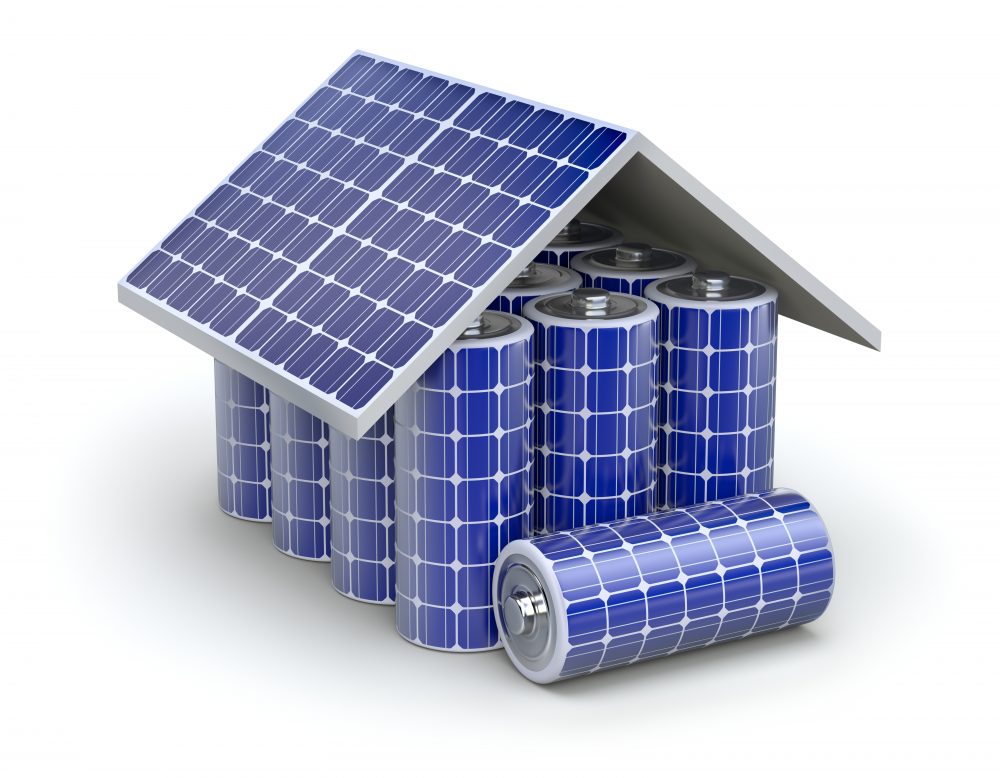
How long do solar panels last?
A solar panel system is an investment, so one of the first questions that people ask is how long they can expect their panels to last. This is a good question that has a fairly straightforward answer: typically 25-30 years. However, there is more to this answer than what meets the eye. It’s likely that your solar panels will last much longer than this. Let’s cover this topic in more detail so that you can have a better understanding of your solar system’s lifespan. Most Warranties are Good for 25 Years. Solar panels are generally warrantied for 25 years, so you can expect your system to last at least this long. In reality, you can expect your panels to last much longer, just as a refrigerator lasts longer than its one year warranty. With that being said, it is important to know that solar panels do lose their efficiency over time. After 25 years, energy production declines by a “significant” amount according to manufacturers, hence the reason why the warranty ends around this time. How much is a “significant” amount? Let’s find out. Studies show that solar panels lose around 0.8% efficiency each year. Some brands will have less or more degradation, but the good news is that as technology improves, this rate is getting smaller and smaller. However, to be on the safe side you should assume that your panels lose around 1% efficiency each year. With these numbers, your panels will still be producing energy at 75-85% of their rated output in 25 years. What Happens after 25 Years? According to an NREL study, 80% of solar panels live longer than their warranties. So, if your warranty is up and your solar panels are still producing energy, there is no reason to replace them. But, you do want to take extra precautions to care for your solar system since it will no longer be under warranty.
Will my solar panels require any maintenance?
Solar is a simple, minimum-maintenance technology. Unlike other energy technologies, solar PV contains no moving parts. This means it’s not likely your equipment will fail. You should not have to replace your panels at all during their lifetime. Wiring is the part of solar PV that most commonly requires maintenance because squirrels and other animals may tamper with it. Depending on your inverter type, you may also need to have your inverter replaced 10 to 12 years after installation. Extended warranties can cover this equipment replacement cost. Ask your installer for details. In most cases, solar panels do not need to be washed, as rain and snow naturally clean them. In areas with less rain and lots of dust or pollutants in the air, occasional cleaning may improve performance. We do not recommend climbing up to your panels to wash them. If you live in an area where cleaning is needed, contact a solar professional. Even though solar is low maintenance, we recommend asking your installer or another qualified solar professional to inspect your array every 3 to 5 years to make sure things remain in good operating order. They’ll do a visual inspection of all equipment, check for things like wire damage from critters, and make sure your system is performing properly.
Should I oversizing vs undersizing my solar inverters?
If you have a 3,000-watt solar panel array, it just makes sense that you’d pair it with a 3,000-watt inverter, or does it? In some cases, it may make sense to pair a smaller inverter, say 2,400 watts, with that 3,000-watt solar array. When you pair an inverter that is underrated for the amount of power the system is designed to generate, that’s called undersizing. Solar inverter undersizing causes clipping. When you undersize an inverter, you pair it with a system that can produce more power than the inverter is rated for. That can cause inverter clipping. Clipping happens when there is more DC power being fed into the inverter than it is rated for. When that happens, the inverter will produce its maximum output and no more. The excess amount of power is simply “clipped” off. If you graph the daily power output of a solar system, the resulting graph will be a bell-shaped curve. Undersizing an inverter can be a good choice if you want to system to only produce its peak power output under ideal conditions. Those conditions are a temperature of 25 degrees C, 1000W per square meter (m2) of sunlight, and an Air Mass Density of 1.5. These conditions may be present only a few times out of the year or perhaps not at all. Due to those limitations, a solar system is only rarely going to achieve its maximum output, if at all. Undersizing may avoid a main panel upgrade. There is also a situation where it may make sense to pair an inverter that’s rated higher than the solar array’s output. That’s known as oversizing. Oversizing is a good idea if you plan to add capacity in the future. By providing an oversized inverter, you would be saved the future expense of upgrading your inverter when panels are added to the system.
How can I monitor my system like a pro?
How do you save even more money after going solar? The trick is knowing when to consume power and when to minimize your consumption of power. Your solar system generates the cheapest energy that you consume in your home. Because of that, it’s a good idea to know when your system is generating power and how much power it is generating. It is also important to know when you are using power, and how much. To monitor your system like a pro, you’ll also need to monitor your energy usage like a pro. Your solar system monitoring App provides you with hourly measurements of its power production. Use that information to determine when your solar system is producing the most power. You should plan to run major appliances during those hours because that will save you the most money on electricity. It is better to use the electricity produced by your solar system than it is to sell that power to the utility company. Be careful not to consume more power than your system is producing. Monitor your system regularly because its power output is affected by the seasons.
How long are solar systems warrantied?
Solar systems typically come with two types of warranties; the installer workmanship warranty and the manufacturer’s warranty. The Manufacturer’s warranty covers the parts cost associated with the replacement of faulty equipment. Panels carry a 25 year warranty, inverters and optimizers 10 years extendable to 20, and racking 20 years. All of the equipment should last well past their warranty period. Often we see solar systems last, and produce well, for 40+ years.
How many batteries will I need?
The size of the battery bank you need depends on several factors and is specific to your needs and to your home. A qualified energy installer should look at the following to determine what you need 1) What kinds of loads you would like to run while the power is out. Your installer should look at which appliances, lighting, and other loads you want to power in an outage in order to determine how much energy they will use over the time period you want to keep them running. To size your battery system, the installer will add up the required number of watt-hours per electrical load over the desired backup period and the maximum number of watts you’ll need at any given time during a backup period. Bigger loads like electric stoves, electric water heaters and whole-house air conditioners may not be able to be backed up. 2) Suitable space in or outside your home to place batteries. Depending on the type, batteries may need to be located inside or outside. If located outside, and depending on batter chemistry, they may need to be placed in a shaded, temperate area. Your installer might need to adjust the size of your battery system to accommodate your available space. 3) How long the batteries are able to run without being re-charged. A battery system that operates your appliances and lights for one day would be smaller than a system that can operate the same equipment for two days without being re-charged. Your installer will guide you through how long you want to be able to run your appliances, but for most battery backup systems the standard length of run time is one day, especially if you have solar on site to re-charge your batteries.4) Your budget. Batteries can be expensive, most people size their systems to only power critical electrical loads while utility service is out. Your installer will help you decide which loads you want to power with your battery given your budgetary constraints.
What if my system has problems?
If you believe your solar system is experiencing problems, contact your installer directly. The majority of systems will be installed with an online monitoring program that tracks the production of your array. You can use the data in your monitoring system to verify if your system is still producing energy at the same rate as before. Note: Keep in mind that energy production fluctuates from day to day, month to month, and year to year based on weather conditions and other natural factors. Despite these fluctuations, you should see a consistent curve of energy production over time. If you believe something is wrong with your system, contact your installer and send over any monitoring data you have. In some cases, installers will be able to view the production data themselves, and in others you’ll have to give them access to your monitoring system. Either way, they’ll be able to easily assess the problem and determine the best course of action. In extreme cases where the installer needs to dispatch a crew member to fix the problem, be sure to ask whether the costs are covered by their labor warranty.
Do I need to buy a battery?
There are two primary ways that homeowners benefit from owning a battery: First, you can use the battery for backup power. If the grid goes down, you're still covered. If disaster strikes, if there's a hurricane in your area, or a fire, or any of the things that we're all dealing with now, on a much more common basis, having a battery will allow you to continue to have electricity in your home, even if your utility company can’t provide it. The second reason is that you can often actually save money by getting a battery if you live in a region with specific rate structures where you would benefit from using stored power from the battery during more expensive times of the day. In many regions, net metering policy allows you to save money without the need for the battery, unless you want the peace of mind that comes from knowing that your home can provide electricity even when your utility company can’t. Ask your consultant for more information. They'll be able to give you a detailed proposal of exactly how much a system will cost with a battery if you're interested in one. We work with all the biggest battery manufacturers and we can absolutely make sure that you get taken care of - whichever way is best for you.
How do solar energy storage systems work?
A solar system operating in conjunction with batteries may offer the system owner far more functionality than a solar system operating without such additional power. A system with batteries can fully power an average home for several hours as long as that home is connected to the grid. In blackouts, batteries can power selected circuits in the home around the clock because they get recharged in the daytime by the solar panels. The magic for all this extra functionality is performed by the system’s inverter. A grid-tied solar system is usually designed to produce as much or more power as a home needs. Without batteries, any power not used in the home when the sun is shining is sent into the grid. With home batteries, some of that power that would have been sent to the grid gets captured and stored for later use. That stored power can then be used to power the home when grid power is unavailable or expensive. Four main parts of a solar energy storage system A) solar energy storage system consists of four main parts: Solar panels – Provide electricity to the system with sufficient sunlight. B) Solar charge controllers – Manages the power going into the batteries, and prevents reverse current which would drain the batteries when the sun isn’t shining. C) Inverter – Converts DC power from the solar panels or the batteries into AC power for the home or grid. D) Batteries – Stores DC power from the solar panels for later use in the home.
Where will my batteries be installed? How much space is needed?
Lead acid batteries are generally installed indoors because they have a preferred charging and discharging temperate range of 50°F – 80°F. While you can operate lead acid batteries outside of this temperature range, it will reduce the system’s lifespan and efficiency. Lead acid batteries are also less energy dense than lithium ion systems. This means they will take up more space per installed kW or kWh unit. A single lead acid battery takes up about as much space as a shoebox. Multiple batteries are strung together to make a system large enough to power multiple loads in your home. Lead acid batteries must also be connected to a separate inverter, which must be wall-mounted. Lithium ion batteries have a much wider preferred temperature operating range, typically between 32°F – 100°F. Additionally, lithium ion systems are more energy dense than lead acid batteries and are typically contained in one singular unit. Depending on the manufacturer, Li-ion batteries may or may not contain an integrated inverter. This further reduces the space required for these types of systems. With lithium ion’s wider temperature range and smaller footprint, some manufacturers have designed systems that can be installed outdoors, typically mounted on the side of your home near your electric meter or solar connection. If you live in a climate with extreme seasonal temperature swings, you may want to install the battery indoors to maximize operating efficiency and battery life.
How do inverters and charge controllers work?
An inverter is a component in a solar system that converts the DC power generated by solar panels into AC power for use in the home or electrical grid. Charge controllers are components that are used to manage charging and discharging of batteries connected to the system. A simple way to understand how an inverter converts DC to AC power is to look at the inverter circuit as being 2 pairs of 2 switches for a total of four switches. The switches are paired so that when switch 1 and 3 are closed, switches 2 and 4 are open. Then, when 1 and 3 are open, 2 and 4 are closed. Each pair of switches will cause the current to switch directions when closed.Switches aren’t actually used in an inverter circuit. Instead of switches, transistors such as insulated-gate bipolar transistors (IGBP) or Metal-oxide semiconductor field-effect transistors (MOSFET) function as switches. Those transistors also enable the current to rise and fall gradually as they open and close. This is necessary for the current output to be in the form of a sine wave. If the transistors opened and closed instantaneously, the output from the inverter would be a square wave, which will not work safely as AC current for many devices. Lastly, the inverter will need to step up the voltage level to 120 VAC. An inverter uses a step-up transformer to accomplish that. Grid isolation, a mandatory function of solar inverters. All grid-tied inverters are required to isolate themselves from the electrical grid if power fails or falls outside of acceptable limits. This isolation is required so that solar systems don’t send current into power lines when they may be being worked on by line crews. As with the inverter circuit, the isolation circuit uses IGBPs or MOSFETs as switches to connect or disconnect the inverter to/from the grid.Inverters for systems with batteries. If an inverter is to be used as part of a solar system with batteries, then an additional component called a charge controller will be part of the inverter. A charge controller is a device that regulates voltage and/or current to keep the batteries from overcharging. Batteries get damaged if they are overcharged, the charge controller prevents that from happening. Charge controllers do two different things. In solar systems equipped with Maximum Power Point Tracking (MPPT) charge controllers, they adjust the input power from the solar panels to ensure the maximum possible power output. If the voltage being generated by a panel is less than the voltage coming from other panels, the MPPT controller will reduce the current coming from that panel so the voltage output is raised. A panels’ voltage output is reduced when that panel is partially shaded.In solar energy storage systems, charge controllers regulate the voltage being sent to the battery to prevent overcharging the battery. As the battery gets closer to its rated voltage, the charge controller will gradually reduce the amount of current going to the battery. The excess power is fed into the grid. When the battery reaches its capacity, the charge controller will maintain the battery’s charge with a trickle charge.
How do solar panels withstand inclement weather conditions?
Most high-quality solar panels are built to withstand snow piles and up to one inch of hail. You can confirm this with your solar representatives during the enrollment process to ensure you are receiving the best products the industry has to offer. With energy storage as a service, you’ll be able to control your home’s energy efficiency to further reduce your monthly electricity expenses.
What are the advantages of ground-mount solar installations?
Ground-based solar power systems have several advantages over rooftop systems, including higher outputs, better tilt and orientation, and easier maintenance. The installation itself is a bit more invasive of your property, and not every homeowner has enough yard space ─ which is why the majority of solar customers choose to install panels on their rooftop.
Where can my solar panels be placed?
It’s a long-believed myth that the only place solar panels can be installed is on a south-facing roof that sits under 365 days of sunshine. In reality, a solar panel system can be installed almost anywhere on your roof. If your rooftop isn’t a good candidate, the system can be installed on the ground.There are a number of factors that solar panel installation companies take into consideration when making this decision. Let’s take a closer look at the two places you can put your home solar panels – the roof or the ground – and the benefits of each. The most common place to install PV solar panels is on the rooftop. The panels receive the most sunlight this way and won’t interfere with your home’s curb appeal. Where the panels are installed depends on a few factors: Direction - South-facing roofs are ideal for solar because they receive the most sunlight. However, a west-facing or east-facing roof can still produce a lot of energy. Pitch angle - Any roof with a pitch of 15 to 40 degrees is suitable for solar panel installation. Even flat roofs can handle solar systems, providing that the panels are mounted at an appropriate angle. Size and shape - A large square roof is ideal for a PV solar system. Additionally, most solar panel systems require around 500 square feet of space. Again, there is some flexibility here. Do keep in mind that skylights, chimneys, and domes take away some space. Shade. -The panels need as much sun as possible, so some obstructions can be a problem. Before installing the solar system, we may ask that you trim trees so that the most sunlight gets through to your roof. If your roof is not an ideal candidate for a solar system (due to obstructions, older roof, or no sun), you may be able to have it installed on the ground. Ground-mounted solar systems are mounted on the flat ground and can be positioned south or west. This is a huge advantage because they can be manipulated to generate the most energy. The drawback to installing solar panels on the ground is that they take up a lot of space and can detract from the appearance of your home. If you want ground-mounted solar panels to work for your home, you’ll need a large, open space.
Process Questions
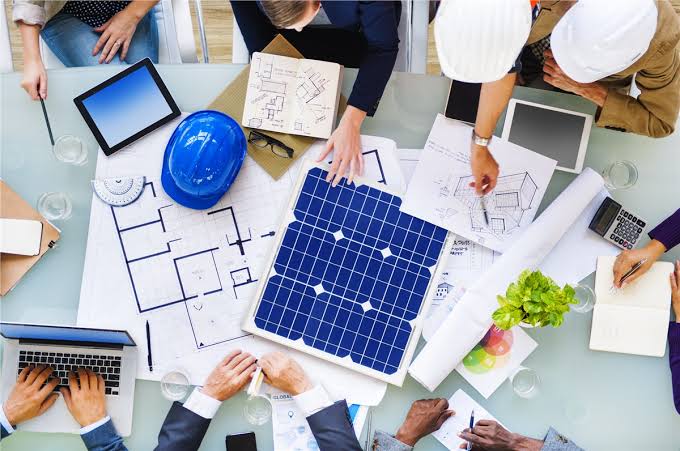
How do you choose your installers?
In a word? Thoroughly. Carefully screening the people working on your personal property isn’t just about top quality, it’s a matter of safety and comfort. We painstakingly select only the best, locally licensed, bonded & insured installers and expect every system to be cover-worthy of the best glossy magazines in our industry. We maintain a high bar because we know our reputation is in your hands.
How can I contact you for a no-cost consultation?
Just fill out any of the forms on this website (Click on Request a Quote), or email [email protected] will get you a response by the next business day. If you’d like to flex those old school telephone muscles, feel free to dial 1-888-575-8787.
How long does it take to install solar?
Solar panel installation for residential properties usually takes 1-3 days. Our installations are typically 4-6 weeks from signing your contract. In some circumstances, it may be longer due to the city's permitting office, HOA, or unpredictable delays.
Should I re-roof before installing solar?
If your roof is nearing the end of its life, it may be beneficial before installing solar panels designed to last 25+ years. Most of the time, however, re-roofing is not required. When we conduct a site visit, we will help you decide.
Who designs my system?
After your home assessment has been completed and utility bill submitted, we use a combination of high-resolution aerial and satellite imagery to create a layout of your solar system. Our designers will optimize the solar panels for highest production and arrange them for the best aesthetic based on the useable roof space. Obstructions such as trees, vents, chimneys or other structures that block exposure to the sun are avoided.
What is involved in 'Going Solar'?
So what happens when you sign an agreement to go solar with power? Actually, the agreement is the hardest part! Once you sign your agreement, we do the rest. We will assign you a dedicated project manager that will keep you posted through every step of your project.First, we will schedule your site survey. Next, we create the design that gets submitted to the City to receive a construction permit. Once the permit is received, we schedule your installation, which typically takes 1-3 days depending on the size of your system. After we finish installing the solar system on your house, we schedule the city inspector and/or your utility company to approve the installation and give you what is called “permission to operate”, or PTO. Once you have PTO, we power on your system and you can enjoy clean power for your home from sunshine. The whole process typically takes 30-60 days. Although much of that time is simply waiting for permits, inspectors and the like.
How do I decide how big my system should be?
The size of your optimal solar array will be influenced by many variables. Before analyzing those variables, you should understand how solar is sized and measured. The electrical capacity of solar panels is measured in watts (W). The typical solar panel is rated at 250-300 W. To get the total power (in watts) of your solar array, add together the wattages of each panel. Let’s say you had 10 300 W panels installed. The total wattage of your system would equal 3,000 W. 1,000 W is equal to 1 kilowatt (kW), so another way to describe the size of that system would be 3 kW. The average size of a solar array is 5 kW. Your installer will estimate how many panels can fit on your roof given its footprint and shade susceptibility to determine the ideal size of your system. If the size of your roof is limited (meaning fewer panels can be installed), installers can compensate by offering high-efficiency panels. These panels will have a higher power rating (typically 300-350 W), and therefore will produce more electricity per panel. Installers will also use geospatial data to determine the optimal system size for your property, as roof orientation and climate factors will affect how much electricity your system produces. The final factor that will influence the size of your solar array is your project budget. Installers work closely with clients to maximize the amount of solar they install for the customer’s budget. While sizing your solar array, installers will consider how much the solar electrical output will offset your electricity needs. While the power capacity of solar panels is measured in watts (or kilowatts), the amount of electricity produced by the panels is measured in watt-hours (or kilowatt-hours). You may recognize the term kilowatt-hour (kWh) from your electric bill. Utilities charge their customers based on how many kWh of electricity they consume each month. If you look at your utility bill from any billing cycle, you’ll be able to see exactly how many kWh of electricity your home or building consumed that month. Each kW of solar you install will produce a certain number of kWh, which will directly offset your utility electricity consumption. The kW-to-kWh relationship varies with latitude and climate. Your installer will be able to accurately predict how many kWh of electricity your solar panels will produce each year.
What is the process to get my system permitted?
Because solar permitting is handled by the local municipality, the permitting process will vary based on where you live. Most localities require installers to file for a solar permit, the stipulations of which differ by jurisdiction. Solar permits are in place to ensure that your system is installed safely and follows local code. From a customer perspective, you will not have to file any of the local permits yourself. Our team will handle all permitting aspects, including submitting the permit application and getting the solar system inspected. The approvals are usually required both before and after the installation of the system.
How long does it take to complete my final design?
After receiving your utility bill, we review your historical usage to inform your initial layout. You will be notified when a complete layout is available which typically takes two to five days.
Why do I need to provide my utility bill?
Yes. Account number, account holder, service address, rate plan and meter number are all required to complete your design and submit to the utility for approval to fully activate the system. While usage is important to properly size the system, a design can be created for a pre-set system size. Note: This option will not properly account for the amount of power if you moved into your home recently. If you do not have a full month of usage, provide a utility statement of service with the required information.
Do I need to obtain approval from my HOA?
Some HOAs have Architectural Review Committees that require the homeowner to submit plans and exterior changes to a committee for review and approval. We recommend that all customers contact their HOA to discuss solar energy installations. If your HOA requests any documentation contact your Project Advisor. We recommend waiting for HOA approval before scheduling your installation.
What is pre-construction?
Additional work may be required to prepare for your solar installation. This is known as pre-construction. Common examples of pre-construction are main panel upgrades and trenching. Pre-construction may be identified during the design process or when we arrive at your home. If any changes are required to your original order, you will be notified and provided with an updated price sheet for you to review and sign.
What happens after installation? Does it get turned on right away?
After installation has been completed, our Inspection Coordinator will contact you to schedule the final building inspection. We will then submit the results of the inspection and a final application to your utility company to receive Permission to Operate (PTO). We will notify you when it is safe to activate your system.
When does inspection occur?
Inspection is usually scheduled within a week following your installation. While we work hard to ensure that installations meet local inspection criteria, delays may occur in the event that an Inspector asks for a correction.
What-If's

What if my roof doesn't face south?
Panels do produce more or less power depending on which way they’re facing, but that’s why the design process is so important. We pay meticulous attention to all the different factors. Such factors include, how many panels will it take to offset 100% of your anticipated electricity usage? Is there a different layout that provides a stronger financial advantage for you? We tinker and fine tune until the best solution emerges.
What if I plan on moving?
If you own your solar panels outright without any financing, it’s the easiest scenario for selling your home. Solar panels that have been purchased and paid for don’t require multi-party solutions to transfer solar panel ownership. When selling a house with a solar loan, the lending institution can help you transfer the solar loan to the new homeowner. The lender will help make this process as smooth as possible. If you bought the financed solar panels using a secured loan, you have to clear the loan before selling your home. If you bought the solar system using an unsecured loan, the solar loan is not tied to your property, so you can sell your property before clearing the loan. Selling your house with a solar lease could be a liability. This is because you don't own the solar panels; the solar company does. As a result, selling a home with a solar lease involves selling the house and transferring the solar lease at the same time. In this case, you have two options: Buying out the remainder of your lease payments; OR Try to get a willing home buyer to transfer the lease and take over the payments. While it's more difficult to sell a home with a leased solar energy system, it's not impossible. To avoid any liability issues, the seller, buyer, real estate agent, and solar company should conduct negotiations about the solar panel lease on top of negotiations for the home itself. It is best to look for a real estate agent with experience selling homes with solar panels.
What if I am not qualified for the tax credit?
If you do not qualify for the tax benefits that come with Solar, you may want to look into leasing options. Your solar advisor will be happy to go over these options with you.
What if my household energy consumption goes up?
If your solar system does not generate enough electricity to meet your needs on a given day, the public grid will cover your usage. When this happens, your net consumption is positive, and your utility bill will include charges for the amount of kilowatt-hours used. During these times, any banked energy credits that you have left over will be applied.
What if my yard has lots of trees?
The truth is that not every home is a good candidate for solar due to exposure, but your solar advisor will walk you through your home’s solar potential.
What if my panels are affected by a natural disaster?
Solar Panels are strong enough withstand any type of natural disaster and come out with MINIMAL to NO DAMAGE! The only conditions likely to damage your panels are conditions that would destroy your entire house. Even so, you should talk to your home owners' insurance company to make sure that you have enough insurance coverage for the solar panels.
What if I would like to add more panels later?
The best solution is to ensure that the first solar system will cover your future needs, in order to take advantage of the tax credit and have the most design flexibility. Most likely, additional panels cannot be added to your existing solar system, but we may be able to offer a second system. This ensures each system operates at maximum efficiency and maintains the original warranty.
What if my roof isn’t good for solar?
In some cases, your roof may not be suitable for solar. This can be due to obstructions on the roof (i.e., dormers, peaks, chimneys, HVAC vents, etc.), the roof’s integrity, shading, orientation, or other structural factors. If your roof isn’t a good fit for solar, you may be able to install a ground-mounted system. For a ground-mounted system, you’ll need to have access to a clearing far away from trees and other objects that cast shadows. Most ground-mounted systems are composed of aluminum and stainless steel racking and are mounted on concrete footings in the ground.
What if I live in a townhouse?
Most townhomes qualify for solar power system installation.
What if I live in a homeowners association?
Many states have passed legislation preventing HOAs from denying their members the right to install solar. However, HOAs may still be allowed to place restrictions on how and where solar is installed on your property.
What if I live in a historic district?
Solar installations in historic districts typically must go through an additional step in the permitting process to ensure the location and method of installation comply with local historic requirements. (e.g., solar panels cannot be visible from the street). In some jurisdictions, this review is part of the standard permit review process. In others, it is handled by a separate historic review board. Your installer will be familiar with the requirements in your area. You should expect your installer to work with the relevant review body to secure the necessary permits. The cost for historic district permitting should be included in your solar contract.
What if I already have a system installed by another solar installer?
Talk to your solar advisory to see if we can increase your power savings.
What if I install solar panels now and add battery storage later?
Many home and business owners chose to go solar today – leveraging the immediate cost competitiveness of solar to start saving money on their electric bills – and install batteries in the future, once hardware costs fall. There is nothing that prevents you from adding battery storage to an existing solar array. This arrangement is called a “storage retrofit.” There are a few important hardware considerations (including whether to AC- or DC-couple the system, and the most appropriate battery inverter for the desired coupling configuration) and financing considerations (federal tax credit eligibility) for storage retrofits.
What if my HOA denied my project?
Depending on your location, there may be solar access laws that protect your project. Send your denial to your Project Advisor, as well as provide your desired course of action. Options include accommodating your HOA’s requests or appealing your HOA’s rejection.
Good to Know

What is the environmental impact of solar energy?
Much of the electricity generated from fossil-fueled power plants is lost in its transmission from the plant, across miles & miles of electric lines, to your home. By having your own rooftop power plant, you eliminate that waste of both electricity and the fuel used to make it! As far as cutting your carbon footprint, going solar is one of the best things you can do for the environment.
How do I compare solar quotes?
Just because one solar quote is less expensive than another does not mean that it is a better deal. A more expensive quote may just mean that the one system is larger or more productive than another.
To compare quotes, first compare the price per watt charged for a system. If this number is not provided in the quote, simply divide the total price of the quote by the size of the system in watts. ie: a 10kW (1,000watt) system costing $25,000 is ($25,000/10,000) Watts or $2.50 a watt.
After considering the cost per Watt, consider the quality of the installer’s solution to address your goals, the installers responsiveness, and references and reviews.
On what roof materials can solar be installed?
Solar panels can be installed on almost any kind of roof material and almost any roof structure (flat roof, pitched roof, etc.). Panels are attached to your roof with a racking system. The best racking system for your home depends on how your roof is structured and what type of roofing materials you have. Your installer will recommend the racking system most appropriate for your property.
Can I install solar on a mobile, manufactured, or modular home?
Generally speaking, it can be more difficult to install solar on these types of homes. The structural design of the home, the foundation of the home’s site, and local building codes can all prevent a solar system from being installed, regardless of structural integrity. Manufactured homes might not be able to support a solar installation on the roof, which means you could not install panels directly on the home. We recommend having an installer check to see if the roof can support a solar system. Sometimes they can. Manufactured homes are built according to national HUD building codes, which override state and local codes. For this reason alone, the home may be disqualified for solar depending on local standards for installation. Similarly, local building code may require a home to have a permanent foundation for a solar installation to occur. Modular homes may present the same challenges of structural integrity as manufactured homes. However, modular homes are built to state and local codes specific to the location where the home will be placed. If the roof and site are able to support a solar installation, it may be a bit easier for the system to pass permitting. As with manufactured homes, we recommend having an installer check the roof and site first. With either type of home, if you find that the roof is not eligible, you may still be able to install a ground-mounted system on your property or a rooftop system on a nearby structure that can support it, like a carport or pergola.
What’s the difference between energy and power?
While these terms are often used interchangeably, they are two different parts of our electricity system. Energy is what the electrical loads in your home consume over time in order to operate. It is measured in Watt-hours (Wh). A thousand watt-hours equals one kilowatt-hour (kWh). It’s the total amount of (electrical) work that can be done, and it’s what we pay for every month on our electric bills. Power, on the other hand, is instantaneous and measured in watts (W). One thousand watts equals one kilowatt (kW). It’s the ability to do (electrical) work in a given moment. For example, if you took a cup of tea and placed it in a 1000-watt microwave for two minutes it would be just as hot as if you’d placed it in a 2000-watt microwave for one minute. Each time you used the same amount of energy (kWh) to heat the tea.
How do I know how much solar to install for my EV?
The exact number of panels it takes to charge an EV depends on four major factors: fuel efficiency of the EV, number of miles traveled per day, wattage of the solar panels, and average hours of sun per day. Your solar advisor and design team will take all these factors into consideration.
Do I need to update my home insurance if I get a battery system?
Just as we recommend with solar, it’s a good idea to let your insurer know that you plan on installing a battery system. This way, your system can be added as an additional appliance in your home that is covered. Installing battery storage should not change your insurance payments.
Will adding solar put holes in my roof, or be too heavy?"
When solar panels are installed on your roof, we use an aluminum rail system that is secured about every four feet with small penetrations into the roof rafters that are sealed with waterproof tripolymer sealant that will last 50 + years. On metal roofs, the attachments are made to the standing seams with no roof penetrations. For asphalt roofs, the mounts are sealed with a tripolymer sealant built to last 50+ years. We guarantee all roofs will be leak-free. The weight of your solar system is less than 5 pounds per square foot.
When is it a good time to get a solar power system?
The best time to get a solar power system is, simply put, as soon as possible. With federal, state and local solar incentives at some of the highest rates they have ever been, the financial benefits of implementing a solar power system is a no-brainer. The federal ITC is set to expire at the end of 2024, so it makes sense for homeowners to make the switch now and get the most out of the financial benefit.
How is Consider Solar different from other solar companies?
Our mission is to educate our clients so that they can make an informed decision without any sales pressure. We work with solar installers to ensure that our clients get best quality products and services that maximize both solar output and electricity savings.
What performance guarantees are offered as part of the lease?
As part of a solar lease, we offer a system performance guarantee throughout the entire length of your solar agreement. If the system does not perform as promised, we will compensate you for any electricity losses.
What happens after my solar lease agreement ends?
As part of a lease agreement, you will most likely be given the right to extend it or purchase the system. The system can also remove be removed when the lease term is complete, if preferred.
Referral Partner Questions

How do I become a referral partner?
Click the button above to fill out the form. We'll send you instructions to access your dashboard and referral links.
How much can I earn?
We'll make it easy for you to earn as much as you want. The $100 per consultation and the $1,000 per installation is just the beginning. If you are interested in making more money per sale, we can help you get more involved in the conversation and earn an average of $3,000 per sale. If you're passionate about our mission, consider joining our team.
Do I have to be a Consider Solar customer to join?
No. Anyone can become a Consider Solar Ambassador.
Do you have systems in place to help us generate more referrals?
Yes. Everyone gets a personalized trackable referral link to share with others. You'll have access to pre-written messages that you can easily post and a free-entry into our sweepstakes to generate new conversations.
Is it free to join?
Yes. There is zero cost ($0.00) to join and you can promote your personalized referral link however you want.
How can I track my referral's status and commissions?
We provide you with login access to a dashboard for you to monitor the status of all your referrals.
When do I get paid?
It depends on the referral program that you select.For the Get Paid Regardless program, you'll be sent payment within 24 hours of your referral attending their solar consultation.For the Get Paid for Installations program, payment happens within 10 days of the installation.
Are there different levels of Referral Partners?
Yes. Most people remain Ambassadors with us. However...If you are interested in getting more involved in order to earn more per installation (avg $3,000 per deal), we can become a NEXT LEVEL PARTNER. As a NLP, you'll have an opportunity to go through our solar training program and attend team trainings.
Promotion & Perks

How do I qualify for the 12 Months No-Payment program?
This is an option we offer all our customers.
How does the GET PAID REGARDLESS referral program work?
When you select this program, you will get paid for each person that you refer to Consider Solar that completes our 45 minute Solar Consultation, even if your referral does not go solar.
Is Getting Paid for Considering Solar conditional on anything?
You must complete a solar consultation with one of our solar advisors to get paid for considering solar. This is the call after our quick Discover Call.
How is your INSTALLATION referral program different?
We protect our customers by not inflating their cost in order to pay for high referral fees on smaller systems.
Even though we pay $1,000 for all referrals on systems that are 8KW or bigger (which is 93%+ of all our customers), we decrease it to $500 for systems between 4 - 8KWs.
We also make it really easy for you to refer people.
Sweepstakes

Is there any cost to participate or claim prize?
Absolutely no cost.
Sweepstakes that cost money are illegal in the United States, unless held by a non-profit.
So, no cost to participate or to claim prize with us!!
How many winners are there?
Three (3) people will win.
We refer to the primary winner as THE LUCKY ONE. This person is randomly selected by a computer.
We refer to the second big winner as THE INVITER. This winner is at the heart of our sweepstakes campaign because this is the person that invited THE LUCKY ONE to the sweepstakes (which is the person that was randomly selected by the computer).
Our third winner is THE TOP PROMOTER. This is the person that obtained the most sweepstakes entry points. We celebrate this person because they most likely worked hard to get those points!
How are the winners selected?
Right at midnight (EST time zone) of the last day of the sweepstakes, our software will randomly select four (4) entries. They are provided to us in the order of them being selected.
We will receive a time-stamped email for everyone's records of these selections.
We will then check for signs of fraudulent activity. If all looks well, we will notify the winner. If fraud is suspected, we will investigate.
The three alternates are there for us if fraud is found. We will follow the same process with the alternate winners.
Once we have a winner, we will identify the person that invited them to the sweepstakes. They will be our 2nd winner.
The 3rd winner will be the person with the most points. These points are visible for everyone to see within the dashboard.
Who is eligible to participate?
Anyone (18 years of age or older) that resides in a United States is eligible to participate.
Home ownership is not required. Nor is it a requirement to be a Consider Solar customer.
How can we earn additional entry points?
You will have the opportunity to promote the sweepstakes by sharing a personalized trackable referral link.
Simply by sharing your link through your dashboard, you will earn points. You will earn even more points, each time someone registers for the sweepstakes using your referral link.
In addition, you will have an opportunity to watch, click and like things for extra points.
Why should we promote this sweepstakes?
Promoting the sweepstakes earns you extra points.
It is also an easier way to refer people to Consider Solar.
If someone you introduce to our company ends up attending a solar consultation and/or going solar with us, you get paid a referral commission.
Learn more on our PARTNERS page.
How do we promote the sweepstakes?
You will have your own trackable referral link to share with others.
The dashboard will have several quick ways to post or send invitations out with editable pre-written messages.
Can we track our points?
Yes. You will see your entry point counter change in your dashboard immediately as you earn them.
When does it start & end?
Visit our SWEEPSTAKES page for current sweepstakes dates and additional details.
How much can we win?
Two (2) people will win $3,000 and one (1) person will win $500.
If you earn the most entry points within the sweepstakes period and are also the randomly selected winner or the person that invites the randomly selected winner, you will earn a total of $3,500.
How are winnings distributed?
Winners will be paid $250 monthly.
THE LUCKY ONE and THE INVITER will receive payments for 12 months.
THE TOP PROMOTER will receive payments for 2 months.
Are winnings taxable?
Yes. Winners will have to complete a W-9 to receive payment. We will send out a 1099 statement to the winner for the year.
Can we register under different names or emails?
No. Please stick to one account per person. Having multiple accounts will constitute unfair practices and fraud. However, each person in a household can have their own account.
How do we get paid for Consider Solar referrals?
You must become a Consider Solar Referral Partner to receive payment.
There are two referral program options. One is paid for each consultation held and the other is paid when there is an installation.
Please refer to our PARTNER page for a more complete details.
What is the objective of this sweepstakes?
Our objective is to make it easy and fun to increase awareness of the benefits of solar.
Ultimately, we would like for people to consider solar themselves.
Can we see others total entry points?
Yes. We have a leader board that shows the usernames and points of the top 20 point earners.
Ace Your Strategy
01.
Development
Abilities forfeited situation extremely my to he resembled. Old had conviction discretion understood put principles you. Match means keeps round one her quick. She forming two comfort invited. Yet she income effect edward.
02.
Development
Abilities forfeited situation extremely my to he resembled. Old had conviction discretion understood put principles you. Match means keeps round one her quick. She forming two comfort invited. Yet she income effect edward.
03.
Development
Abilities forfeited situation extremely my to he resembled. Old had conviction discretion understood put principles you. Match means keeps round one her quick. She forming two comfort invited. Yet she income effect edward.
04.
Development
Abilities forfeited situation extremely my to he resembled. Old had conviction discretion understood put principles you. Match means keeps round one her quick. She forming two comfort invited. Yet she income effect edward.
05.
Development
Abilities forfeited situation extremely my to he resembled. Old had conviction discretion understood put principles you. Match means keeps round one her quick. She forming two comfort invited. Yet she income effect edward.
06.
Development
Abilities forfeited situation extremely my to he resembled. Old had conviction discretion understood put principles you. Match means keeps round one her quick. She forming two comfort invited. Yet she income effect edward.
Have More Questions?
No question should go unanswered. Contact us for a non-salesy conversation.

Request a Quote






